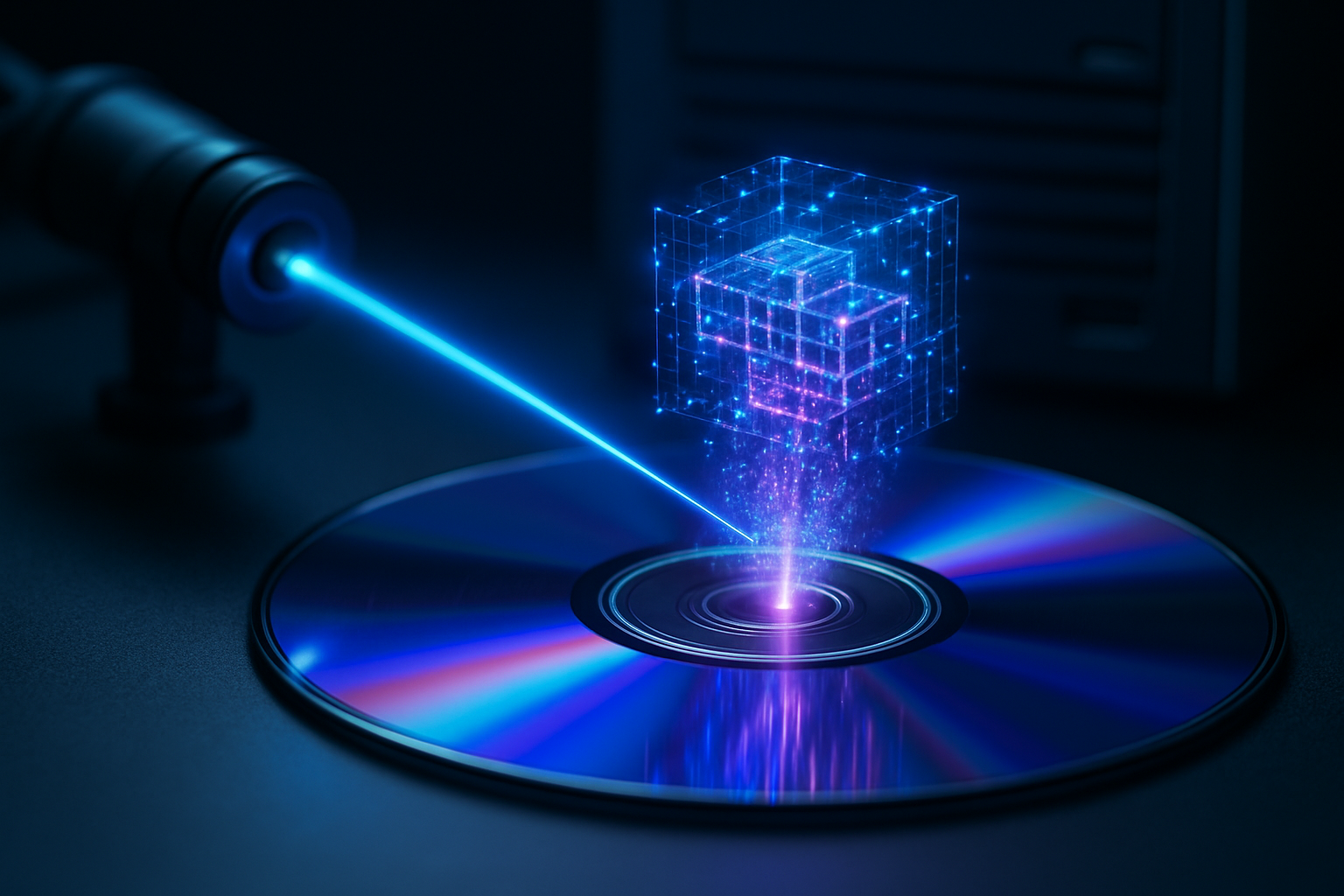Holographic Memory: The Next Frontier in Data Storage
In a world where data is the new gold, the race for faster, more efficient storage solutions never stops. Enter holographic memory, a groundbreaking technology poised to revolutionize how we store and access information. This cutting-edge approach harnesses the power of light to store data in three dimensions, potentially offering unprecedented storage density and lightning-fast access speeds. As our digital footprint continues to expand exponentially, holographic memory could be the key to unlocking a new era of data management.

The process begins with a laser beam split into two paths: the signal beam and the reference beam. The signal beam carries the data to be stored, while the reference beam is used to create the interference pattern. When these beams intersect within the storage medium, they create a unique 3D hologram that represents the data. To retrieve the information, the reference beam is shone onto the hologram, reconstructing the original data.
Unprecedented Storage Density
One of the most exciting aspects of holographic memory is its potential for mind-boggling storage density. Traditional storage methods are limited by the two-dimensional nature of their recording surfaces. Holographic memory, however, can utilize the entire volume of a storage medium, potentially allowing for terabytes of data to be stored in a space no larger than a sugar cube.
This three-dimensional approach also enables multiple pages of data to be stored in the same physical location, differentiated by slight changes in the angle or wavelength of the reference beam. This multiplexing technique could lead to storage capacities that dwarf current technologies, with some experts predicting storage densities of up to 1 petabyte per cubic centimeter.
Lightning-Fast Data Access
Speed is another area where holographic memory shines. Unlike traditional hard drives or even solid-state drives, which must search for and retrieve data sequentially, holographic systems can access entire pages of data simultaneously. This parallel access capability could result in data transfer rates measured in gigabytes per second, far outpacing current technologies.
Moreover, the lack of moving parts in holographic systems means that seek times – the delay in locating specific data – could be reduced to near-zero. This combination of high-speed access and minimal latency could transform everything from everyday computing to complex data analysis in fields like scientific research and financial modeling.
Durability and Longevity
Holographic memory also offers significant advantages in terms of data longevity and durability. The materials used in holographic storage, such as photopolymers, are inherently more stable than traditional magnetic or optical media. This stability translates to a longer lifespan for stored data, potentially measured in decades rather than years.
Additionally, the nature of holographic storage makes it highly resistant to physical damage. Unlike traditional storage media where a scratch or defect can render large portions of data unreadable, holographic systems distribute data throughout the entire volume of the storage medium. This means that even if part of the holographic material is damaged, the majority of the data can still be recovered intact.
Challenges and Future Prospects
Despite its promising potential, holographic memory still faces several hurdles before widespread adoption. One of the primary challenges is the cost of production. Current prototypes are expensive to manufacture, making them impractical for consumer applications. However, as with many emerging technologies, costs are expected to decrease as manufacturing processes improve and economies of scale come into play.
Another challenge lies in the development of reliable and cost-effective materials for holographic storage. While progress has been made with photopolymers and other light-sensitive materials, further research is needed to create storage media that can meet the demanding requirements of data centers and enterprise applications.
As these challenges are addressed, the future of holographic memory looks increasingly bright. Industry analysts predict that the global holographic data storage market could reach $3.8 billion by 2026, growing at a compound annual growth rate of over 30%. This growth is expected to be driven by increasing demand for high-capacity, high-speed storage solutions in sectors such as healthcare, financial services, and media and entertainment.
In conclusion, holographic memory represents a paradigm shift in data storage technology. Its potential for unprecedented storage density, blazing-fast access speeds, and exceptional durability could reshape our digital landscape. As research continues and challenges are overcome, we may soon find ourselves on the cusp of a new era in data storage – one where the limits of our digital world are expanded beyond what we once thought possible.





